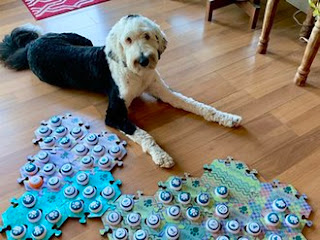Can Animals be Self-Aware?
 |
| Smores the Kitten |
My housemate recently adopted a Siamese kitten she named Smores. With her dark-tipped ears and tail, the kitten supposedly looks "burnt", but to me, she resembles a cotton bud.
One of Smores's favorite activities in our house is staring at her reflection in the mirror. I’ve never seen a cat do this before. Most cats glance at their reflection and quickly lose interest, but Smores locked eyes with her mirrored self for a solid two minutes, occasionally sneaking curious glances at me. Then, she seemed to realize the mirror wasn’t just showing her but reflecting the space around her. Smores took a tentative step toward the “other cat,” only to bonk her head against the glass. Startled, she spun around to find me standing behind her, not in the mirror where she expected.
This might seem like a silly experience, but it got me thinking: with today’s advancements in technology and research, could our pets become self-aware?
 |
| Bunny the Talking Dog |
While this might sound like the plot of a sci-fi movie, it’s real. Bunny’s ability to engage with these abstract ideas has even had emotional consequences—her owners recently disclosed that she’s been prescribed Fluoxetine (commonly known as Prozac) to help her cope with emotional distress from her existential questions.
This raises fascinating questions about the potential for animal cognition. Could technology like FluentPet be the first step toward deeper interspecies communication? And if so, how will this reshape the way we view the inner lives of our furry companions?
What do you think? Could Smores one day be pressing buttons to ask me, “Why are humans so obsessed with mirrors?” Or maybe she’d use the buttons to demand even more tuna treats.


Comments
Post a Comment